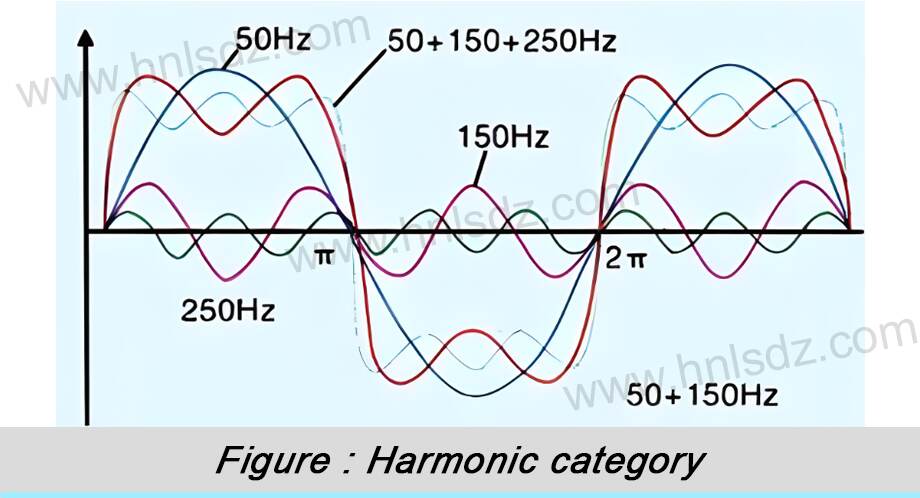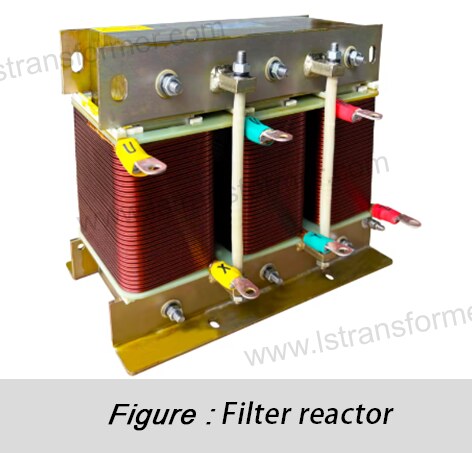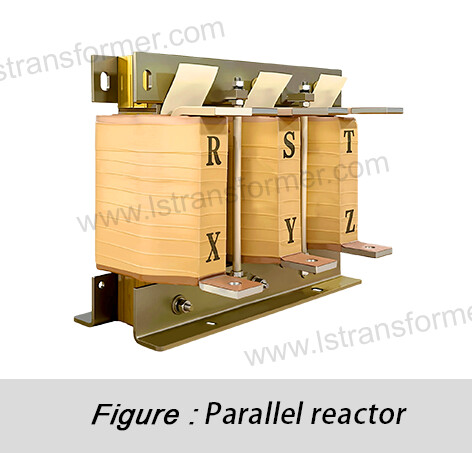Harmonic Control in Power Systems: Reactor Selection and Configuration
Harmonic Control in Power Systems: Reactor Selection and Configuration
With the rapid development of industrial equipment, renewable energy power stations, and data centers, harmonic pollution in power systems has become increasingly severe. Harmonics not only cause transformer overheating and cable insulation aging but may also trigger serious accidents such as capacitor resonance explosions. Reactors, as the core equipment for harmonic control, directly determine the effectiveness of mitigation through their selection and configuration. This article explores how to achieve efficient harmonic control through scientific selection and systematic configuration, starting from the principles of harmonic suppression and incorporating global engineering practices.
Content
1. Harmonic Hazards and the Suppression Principles of Reactors
● Generation and Destructive Mechanisms of Harmonics
Harmonics are voltage or current components with frequencies that are integer multiples of the fundamental frequency (50/60 Hz), primarily generated by nonlinear loads such as variable frequency drives (VFDs), rectifiers, and LED power supplies. Their hazards include:
(1)Transformer Overheating:Harmonic currents cause eddy current losses and stray losses. The loss formula is:

Resonance:Harmonic currents interact with capacitor reactance to form resonance, leading to voltage amplification or even equipment breakdown.
● Core Principles of Reactor-Based Harmonic Suppression
Reactors suppress harmonics through two physical mechanisms:
(1)Impedance Matching:Series reactors increase system impedance, altering the path of harmonic currents and directing them toward low-impedance filter circuits. For instance, the inductive reactance of a series reactor ( ) and capacitor reactance (
) and capacitor reactance ( ) work together to make the system exhibit high impedance to specific harmonics, thereby preventing their flow into the grid.
) work together to make the system exhibit high impedance to specific harmonics, thereby preventing their flow into the grid.
(2)Energy Absorption: Filter reactors and capacitors form LC filters, creating low-impedance paths for targeted harmonics. For example, a 5th harmonic filter is designed with a resonant frequency of 250 Hz, where the LC circuit’s impedance is minimized, actively absorbing harmonic currents and converting them into heat.
Case Study: A German automotive factory installed a 5th harmonic filter (6% reactance rate) on the output side of a VFD, reducing 5th harmonic current from 120A to 30A and lowering transformer temperature rise by 40%.
2. Key Technical Parameters for Reactor Selection
● Reactance Rate Selection and Resonance Avoidance
The reactance rate ( ), the ratio of reactor inductive reactance to capacitor capacitive reactance, determines the resonant frequency.
), the ratio of reactor inductive reactance to capacitor capacitive reactance, determines the resonant frequency.
The resonant frequency is calculated as:
where is the fundamental frequency.
is the fundamental frequency.
(1)4%-7% Reactance Rate: Suitable for suppressing 5th and higher-order harmonics ( ). For example, a 6% reactance rate yields a resonant frequency of 204 Hz (corresponding to 4.08th harmonic), effectively avoiding 5th harmonic resonance risks.
). For example, a 6% reactance rate yields a resonant frequency of 204 Hz (corresponding to 4.08th harmonic), effectively avoiding 5th harmonic resonance risks.
(2)14% Reactance Rate:Targets 3rd harmonic (150Hz)scenarios, such as UPS systems in data centers. Here, the resonant frequency:

far from the 3rd harmonic frequency.
● Current Capacity and Temperature Rise Design
(1) Current Capacity:Reactors must withstand additional thermal stress from harmonic currents. The total current capacity should satisfy:

For example, if the fundamental current is 100A and the 5th harmonic accounts for 20%, the total current is 102A.
(2)Temperature Rise Control:Based on the conductor resistive loss formula , reactors require:
, reactors require:
–Insulation Class:Class B (≤80K), Class F (≤100K), or Class H (≤125K) insulation materials to adapt to varying ambient temperatures.
–Cooling Structure:Natural cooling with aluminum casings or forced air cooling, matching heat dissipation area to power loss. For instance, a 100kW loss reactor requires a heat sink with a surface area ≥5m².
3. Reactor Configuration Strategies and Physical Principles
● Location Selection: Centralized vs. Distributed
(1)Centralized Configuration: Reactors are installed at the transformer’s low-voltage side or busbar to increase overall system impedance and suppress harmonics. The principle involves raising busbar impedance ( ), directing harmonic currents toward low-impedance filter branches.
), directing harmonic currents toward low-impedance filter branches.
–Effect: Suppresses 80% of wideband harmonics but cannot eliminate specific harmonics.
(2)Distributed Configuration:Reactors are installed near harmonic sources (e.g., VFD outputs) to target specific harmonic suppression. The principle involves adjusting local impedance to block harmonic injection paths.
–Effect: Achieves up to 95% suppression for characteristic harmonics like 5th and 7th but requires custom designs for each device.
● Parallel and Series Configuration Synergy
(1)Parallel Reactors: Compensate for reactive power and mitigate voltage fluctuations. Their principle involves offsetting capacitive reactive power with inductive currents but does not directly filter harmonics.
(2)Series Reactors: Form tuned filters with capacitors to act as "harmonic absorbers" for specific frequencies. For example, a 5th harmonic filter’s LC parameters satisfy:

At 250 Hz, the reactor and capacitor impedances are equal and opposite, minimizing total impedance and actively absorbing harmonic currents.
Case Study: A U.S. data center adopted a "7% series reactor + 5th harmonic filter" solution, reducing THDv from 12% to 2.8% and improving power factor from 0.82 to 0.98.
Reactor Selection and Configuration Comparison Table
Scenario | Recommended Reactance Rate | Configuration | Harmonic Suppression Principle | Effect (THDv Reduction) |
Industrial VFDs | 4%-5% | Distributed series + 5th harmonic filter | Blocks 5th harmonic injection path | 12% → 4% |
Data Center UPS | 14% | Centralized series + 3rd harmonic filter | Absorbs 3rd harmonic energy | 10% → 2.5% |
Solar Power Plants | 5%-7% | Busbar parallel + wideband filter | Increases system impedance for wideband harmonics | 9% → 3% |
Commercial Buildings | 6% | Centralized at transformer outlet | Suppresses multi-source harmonic overlap | 7% → 3.8% |
In Summary
Harmonic control fundamentally revolves around "impedance matching" and "energy diversion." Through precise reactor selection (reactance rate, insulation class) and systematic configuration (centralized/distributed, series/parallel), harmonics can be effectively suppressed while avoiding resonance risks. For international users, solutions must align with grid characteristics (short-circuit capacity, environmental conditions): low-reactance centralized configurations for high short-circuit capacity scenarios, while distributed filtering is ideal for precise suppression of characteristic harmonics. Looking ahead, with the rise of broadband active filters (AFE) and smart reactors, harmonic control will enter a new era of "adaptive" and "predictive" solutions.
Contact Us
LuShan, est.1975, is a Chinese professional manufacturer specializing in power transformers and reactors for50+ years. Leading products are single-phase transformer, three-phase isolation transformers,electrical transformer,distribution transformer, step down and step up transformer, low voltage transformer, high voltage transformer, control transformer, toroidal transformer, R-core transformer;DC inductors, AC reactors, filtering reactor, line and load reactor, chokes, filtering reactor, and intermediate,high-frequency products.
Our power transformers and reactors are widely used in 10 application areas: rapid transit, construction machinery, renewable energy, intelligent manufacturing, medical equipment, coal mine explosion prevention , excitation system, vacuum sintering(furnace), central air conditioning.
Know more about power transformer and reactor :www.lstransformer.com.
If you would like to obtain customized solutions for transformers or reactors, please contact us.
WhatsApp:+86 17267488565
Email:marketing@hnlsdz.com

 EN
EN
 FR
FR DE
DE ES
ES



